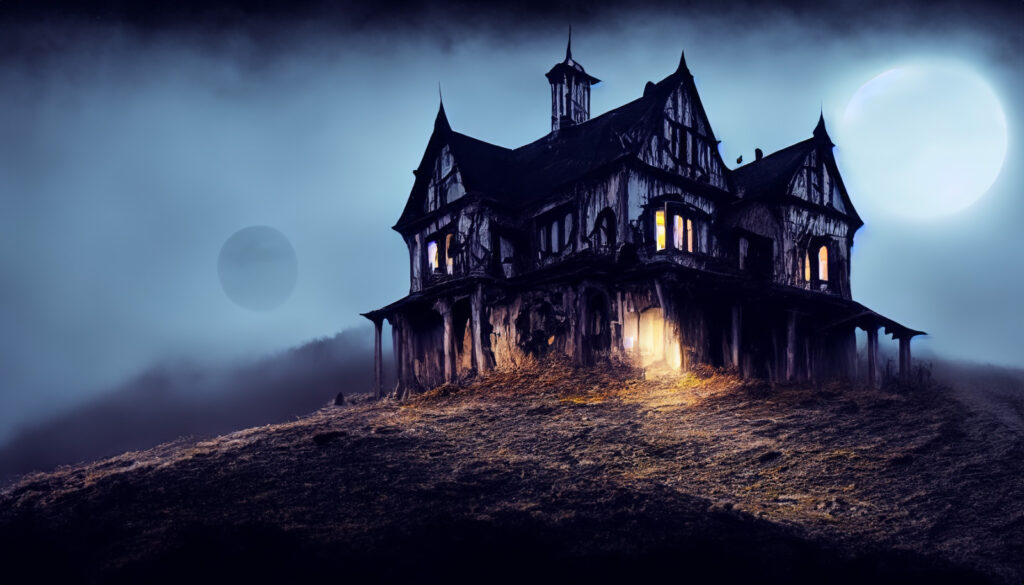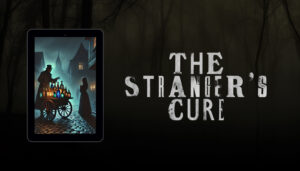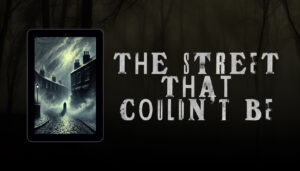Hey there! After last week’s article on the evolution of creatures in dark fantasy, this week we’re exploring the fascinating role that setting plays in horror stories.
Rather than being background scenery, settings often become characters, shaping the mood and tone of the story in chilling ways.
From misty forests to decrepit old mansions, we’ll explore how these atmospheric locales come alive, adding depth and intrigue to our favourite tales. Every shadow holds a secret, and every creaking floorboard whispers a tale of terror.
Let’s dive in.
Eerie Locales and Common Tropes
In the world of horror literature, settings play a pivotal role in setting the stage for spine-chilling tales.
From the decaying halls of abandoned houses to the shadowy depths of haunted forests, these eerie locales serve as the perfect breeding ground for dread and unease.
One common trope found in horror writing is the abandoned house, a crumbling edifice that stands as a testament to forgotten secrets and past tragedies.
Within its dilapidated walls, the echoes of suffering and despair reverberate, heightening the sense of isolation and impending doom for characters and readers alike.
Another staple of horror literature is the haunted forest, a dark and foreboding realm teeming with unseen terrors. Mystery shrouds these tangled woodlands, with their whispering leaves and shifting shadows hinting at malevolent forces lurking just beyond sight.
Within the dense canopy, protagonists often find themselves ensnared in a web of terror, their every step fraught with the threat of supernatural encounters and grisly fates. Do you recognise the popular settings in these examples?
The Abandoned House: Shirley Jackson’s “The Haunting of Hill House”
In “The Haunting of Hill House,” Jackson masterfully employs the abandoned house trope to create an atmosphere of mounting dread and psychological unease.
The mansion serves as a character, with its labyrinthine corridors and eerie architecture mirroring the disintegrating mental states of its inhabitants.
Jackson’s intricate descriptions of the house’s unsettling features, from its crooked angles to its oppressive silence, immerse readers in a world of palpable terror, where every creaking floorboard and whispering draft becomes a harbinger of impending horror.
The Haunted Forest: “The Blair Witch Project” by Daniel Myrick and Eduardo Sánchez
In “The Blair Witch Project,” the dense woods surrounding the fictional town of Burkittsville take on a life of their own, serving as a malevolent force that preys upon the film’s protagonists.
Myrick and Sánchez expertly use the haunted forest trope to cultivate a sense of escalating tension and paranoia, as the characters become increasingly disoriented amidst the labyrinthine trees.
The forest itself becomes a character in the narrative, its eerie ambience and unsettling noises heightening the sense of isolation and impending doom for both the characters and the audience.
The Desolate Graveyard: Stephen King’s “Pet Sematary”
In “Pet Sematary,” King employs the desolate graveyard trope to explore themes of grief, loss, and the corrupting influence of death.
The titular burial ground, located deep in the woods near the protagonist’s home, holds a sinister allure, tempting those who mourn to defy the natural order and resurrect their loved ones.
King’s vivid descriptions of the graveyard’s decayed headstones and eerie atmosphere create a sense of profound unease as the characters grapple with the consequences of meddling with forces beyond their control.
The graveyard serves as a potent symbol of mortality and the inevitability of death, casting a shadow of dread over the entire narrative.
Natural vs. Supernatural Settings
In the realm of horror literature, settings often serve as the canvas upon which tales of terror unfold, with authors weaving intricate tapestries of dread using both natural and supernatural landscapes.
While supernatural settings may immediately evoke images of ghostly dimensions or demonic realms, natural settings like vast seas and desolate deserts possess their own inherent eeriness and foreboding.
Natural settings, such as the boundless expanse of the sea, have long been a source of inspiration for horror writers, their unfathomable depths and unpredictable nature providing the perfect backdrop for tales of maritime terror.
Within the confines of these treacherous waters, characters may find themselves at the mercy of unseen forces, their every voyage fraught with peril and uncertainty.
Authors like H. P. Lovecraft, in his classic tale “The Call of Cthulhu,” use the vastness of the ocean to evoke a sense of cosmic horror and existential dread.
The sea becomes the main character, its murky depths concealing ancient secrets and eldritch horrors beyond human comprehension.
Supernatural settings transport readers into realms where the laws of nature no longer apply, where the veil between the living and the dead grows thin, and where malevolent entities lurk in the shadows.
Are you familiar with these examples?
Natural Setting: William Hope Hodgson’s “The Boats of the ‘Glen Carrig'”
In “The Boats of the ‘Glen Carrig’,” Hodgson masterfully uses the vastness of the ocean to evoke a sense of isolation and existential dread.
As the ill-fated crew of the ship navigates through the treacherous waters, they confront not only the physical dangers of the sea but also the psychological toll of their isolation.
Hodgson’s vivid descriptions of the tumultuous waves and the relentless expanse of the ocean serve as a constant reminder of the crew’s vulnerability in the face of nature’s overwhelming power.
Supernatural Setting: Edgar Allan Poe’s “The Masque of the Red Death”
In “The Masque of the Red Death,” Poe transports readers to a luxurious masquerade ball, where the revellers find themselves shielded within a decaying castle from a deadly plague.
Poe’s vivid descriptions of the lavish ballroom, with its rich tapestries and gilded decorations, create a stark juxtaposition with the grim reality of the plague-stricken world outside.
Yet, beneath the facade of wealth and extravagance, there lurks an undercurrent of unease and impending doom, as the revellers come face to face with the inevitability of their own mortality.
Setting as Symbolism
By carefully crafting the environments in which their characters dwell, authors can evoke a range of emotions and ideas that resonate with readers on a profound level.
One reason authors use setting as symbolism in their writing is to enhance the thematic depth of their narratives.
By imbuing settings with symbolic meaning, authors can explore complex themes such as decay, isolation, and the uncanny in a more nuanced and evocative manner.
For example, a decaying mansion may serve as a metaphor for the deterioration of societal values or the corrupting influence of power, while an isolated island could represent the protagonist’s sense of alienation from the world around them.
By anchoring these abstract concepts to tangible settings, authors make them more tangible and relatable to readers, allowing them to engage with the story on a deeper level.
Here’re some examples from popular horror novels.
Remote Village: Thomas Olde Heuvelt’s “Hex”
In “Hex,” Heuvelt transports readers to the remote village of Black Spring, where residents live under the oppressive shadow of a centuries-old witch’s curse.
The village serves as a microcosm of society, with its insular community and rigid social hierarchy reflecting broader themes of fear, paranoia, and mob mentality.
As the characters grapple with the consequences of the witch’s presence, they have to confront the dark secrets and moral ambiguities that lurk beneath the surface of their seemingly idyllic town.
Abandoned Asylum: Danielewski’s “House of Leaves”
In “House of Leaves,” Danielewski creates a labyrinthine narrative that centres around a mysterious house with ever-expanding dimensions.
The house serves as a symbol of the protagonist’s deteriorating mental state, with its shifting architecture reflecting his inner turmoil and descent into madness.
As the characters explore the labyrinthine corridors and hidden chambers of the house, they confront their deepest fears and insecurities, ultimately confronting the darkness within themselves.
In summary
As we come to the end of our exploration into the eerie landscapes of horror fiction, it’s time to reflect on what makes these settings so spine-chillingly effective. What do you think?
What’s the key element that sends shivers down your spine? Share your thoughts with me in the comments below.
As you continue your journey through the realms of horror literature, remember to embrace the terror and emerge stronger on the other side.
Until next time, keep reading, and embrace the darkness.



